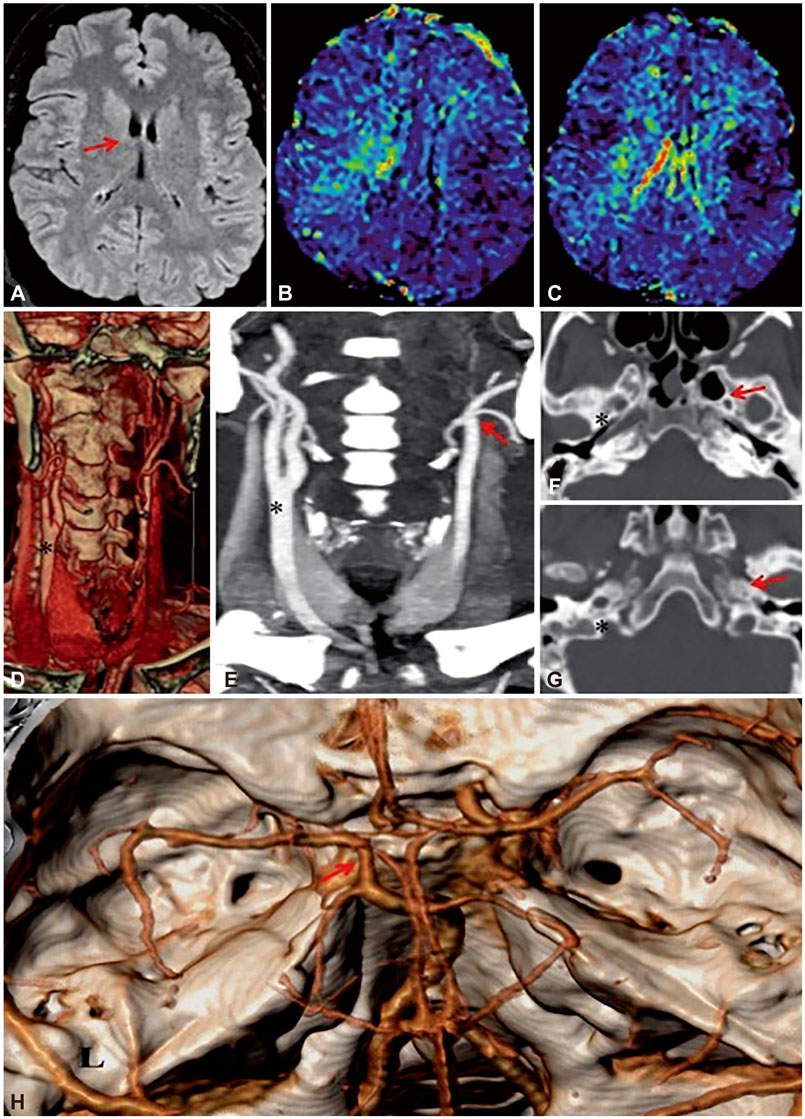J Clin Neurol.
2018 Jul;14(3):417-419. 10.3988/jcn.2018.14.3.417.
Agenesis of the Internal Carotid Artery Associated with Generalized Epilepsy
- Affiliations
-
- 1UOSD Stroke Unit, Department of Clinical and Experimental Medicine, University of Messina, Messina, Italy. paololaspina@virgilio.it
- 2Biomedical Department of Internal and Specialist Medicine of Palermo, University of Palermo, Palermo, Italy.
- 3UOC Neuroradiology, Department of Clinical and Experimental Medicine, University of Messina, Messina, Italy.
- KMID: 2415063
- DOI: http://doi.org/10.3988/jcn.2018.14.3.417
Abstract
- No abstract available.
Figure
Reference
-
1. Lie TA. Congenital anomalies of the carotid arteries: including the carotid-basilar and carotid-vertebral anastomoses. an angiographic study and review of the literature. Excerpta Medica. 1968; 35–41.2. Wang PJ, Liu HM, Young C, Lin MY, Shen YZ. Agenesis of internal carotid artery associated with symptomatic partial epilepsy. Epilepsia. 1994; 35:1337–1341.
Article3. Campello-Morer I, Giménez-Muñoz Á, Guelbenzu S, Pérez-Trullén JM. Agenesis of the internal carotid artery in a patient with vascular pathology, epilepsy and transient global amnesia. Rev Neurol. 2011; 53:508–510.4. Lee JH, Oh CW, Lee SH, Han DH. Aplasia of the internal carotid artery. Acta Neurochir. 2003; 145:117–125.
Article5. Cohen JE, Gomori JM, Leker RR. Internal carotid artery agenesis: diagnosis, clinical spectrum, associated conditions and its importance in the era of stroke interventions. Neurol Res. 2010; 32:1027–1032.
Article6. Altin H, Alp H, Sap F, Karataş Z, Baysal T, Karaaslan S. PHACE syndrome with growth hormone deficiency and absence of bilateral internal carotid arteries: a case report. Pediatr Dermatol. 2012; 29:316–319.
Article7. Kim DW, Lee SY, Lee SK. Focal epileptogenic lesions in adult patients with epilepsy and generalized epileptiform discharges. J Epilepsy Res. 2016; 6:77–80.
Article
- Full Text Links
- Actions
-
Cited
- CITED
-
- Close
- Share
- Similar articles
-
- Bilateral Agenesis of the Internal Carotid Artery: Case Report
- Agenesis of Right Internal Carotid Artery Associated with Intracranial Aneurysm: Case Report
- Separate Origins of the Internal and External Carotid Arteries Depicted on CT Angiography: A Case Report
- Amaurosis Fugax Associated with Ipsilateral Internal Carotid Artery Agenesis
- Common Carotid Artery Agenesis: Duplex Ultrasonographic Findings


